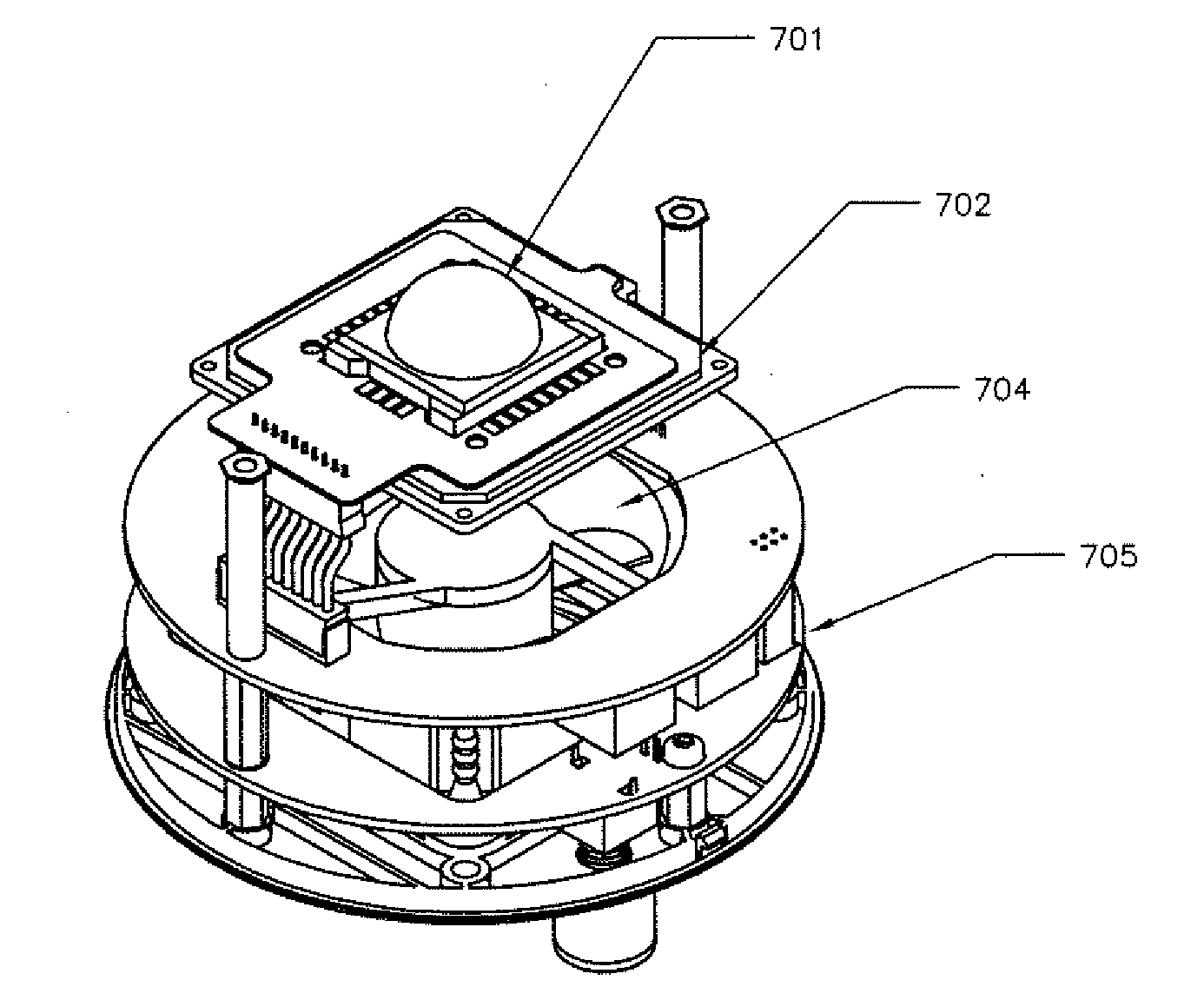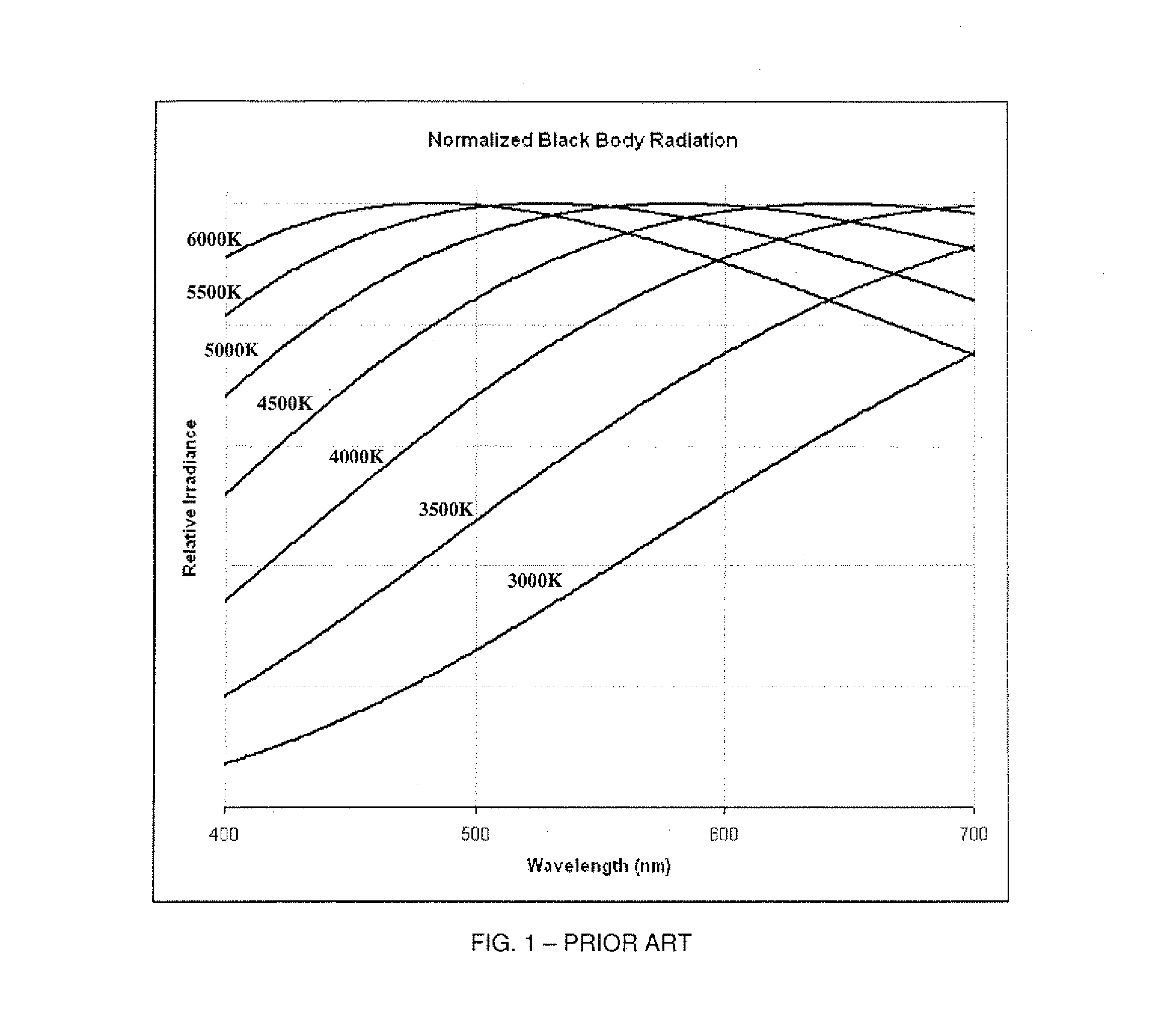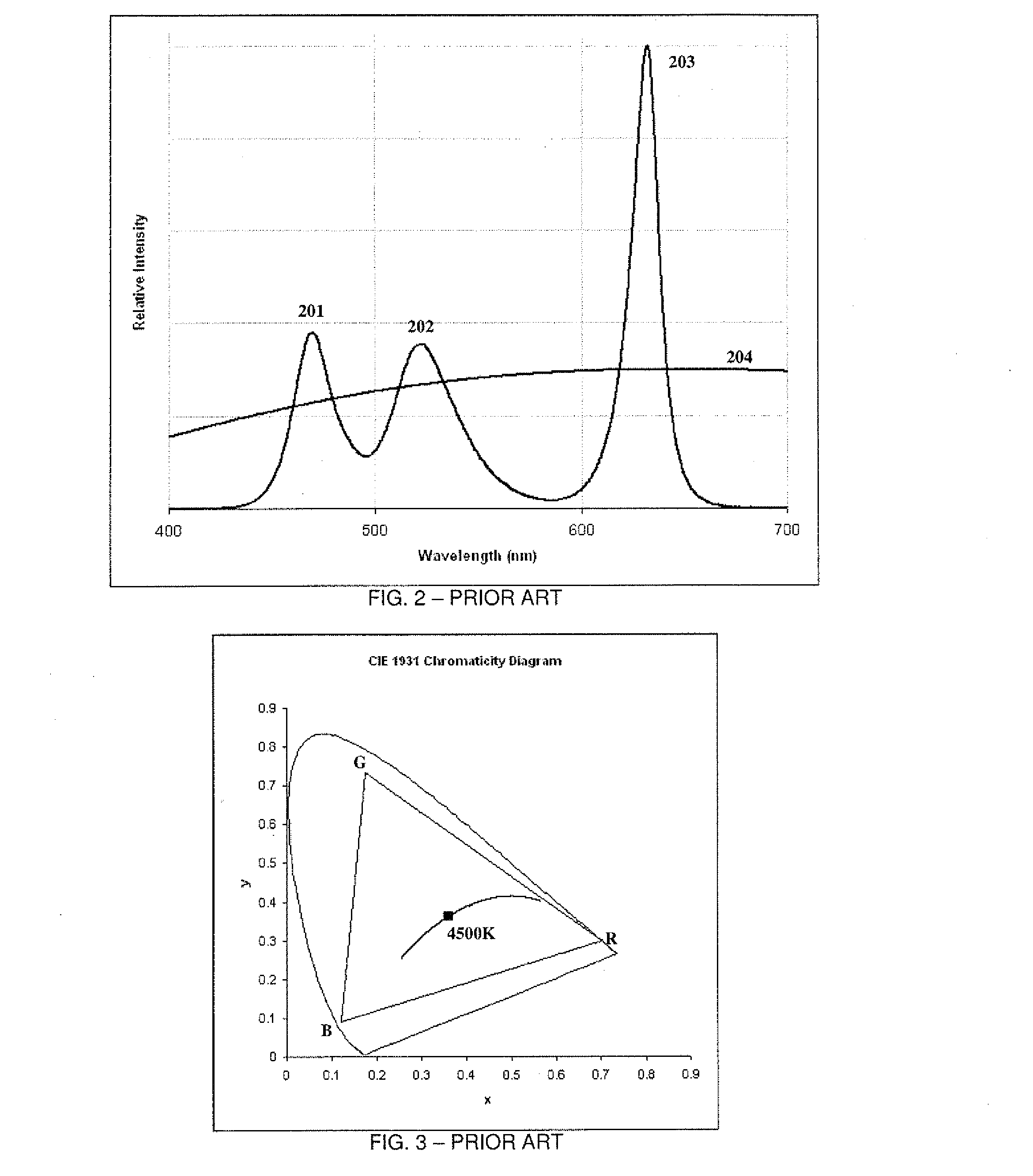LED ILLUMINATOR APPARATUS, USING MULTIPLE LUMINESCENT MATERIALS DISPENSED ONTO AN ARRAY OF LEDs, FOR IMPROVED COLOR RENDERING, COLOR MIXING, AND COLOR TEMPERATURE CONTROL
a technology of led illuminator and luminescent material, which is applied in the field of improved light-emitting diode (led) illumination apparatus, can solve the problems of poor color rendering of led illuminator, low emission efficiency of leds, and inability to accurately reflect significant amounts of yellow wavelengths
- Summary
- Abstract
- Description
- Claims
- Application Information
AI Technical Summary
Benefits of technology
Problems solved by technology
Method used
Image
Examples
Embodiment Construction
[0025]The Color Rendering Index (CRI) of a light source provides a quantitative measure of the quality of the light provided by the source, in terms of its ability to accurately render the colors and appearance of illuminated objects. High CRI values, approaching the ideal of 100, are important for light sources used in such demanding applications as professional photography, videography, and in the motion picture industry. Additionally, the Correlated Color Temperature (CCT) and hue of the light source are tightly controlled, preferably with the ability to adjust or vary the CCT of the light source.
[0026]FIG. 1 shows spectral plots of an ideal black body radiator over the approximate range of visible light, with a wavelength range of 400 nm to 700 nm, at a variety of color temperatures. As can be seen from the plots, the spectral response of an ideal black body radiator is a function of its CCT. Without getting into the mathematics of CRI calculation, a light source of a given CCT ...
PUM
 Login to View More
Login to View More Abstract
Description
Claims
Application Information
 Login to View More
Login to View More - R&D
- Intellectual Property
- Life Sciences
- Materials
- Tech Scout
- Unparalleled Data Quality
- Higher Quality Content
- 60% Fewer Hallucinations
Browse by: Latest US Patents, China's latest patents, Technical Efficacy Thesaurus, Application Domain, Technology Topic, Popular Technical Reports.
© 2025 PatSnap. All rights reserved.Legal|Privacy policy|Modern Slavery Act Transparency Statement|Sitemap|About US| Contact US: help@patsnap.com



